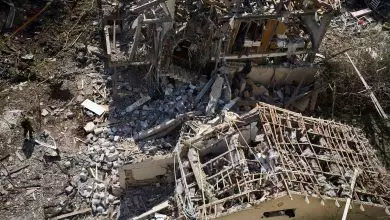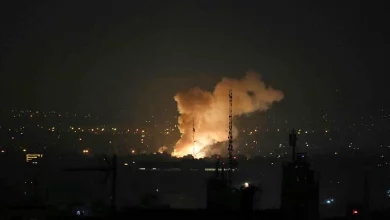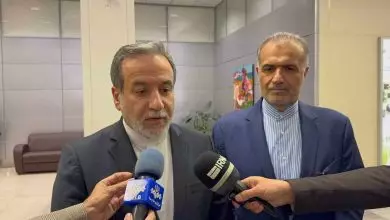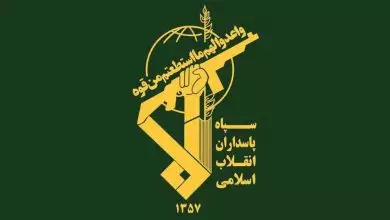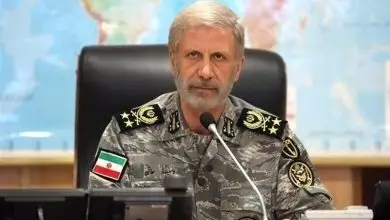Analysis: Persisting Tensions Between India and Pakistan: The Underlying Causes of Continued Conflict
In the early hours of Wednesday, a significant military engagement erupted between India and Pakistan. India executed coordinated missile strikes targeting locations within Pakistan and the Pakistan-administered region of Kashmir, which it labeled as "terrorist infrastructure."

Pakistan has announced that it successfully shot down five aircraft belonging to the Indian Air Force, although this assertion has not yet been verified by Indian authorities. This development was subsequently followed by intense artillery exchanges along the two nations’ de facto border.
Reports have emerged of heightened hostilities along the Line of Control (LoC), with Pakistan alleging that Indian strikes resulted in the deaths of at least 26 civilians and injuries to 46 more. Meanwhile, India has accused Pakistani artillery fire of claiming the lives of 10 civilians and wounding 48 others.
Indian Defense Minister Rajnath Singh emphasized that recent missile strikes conducted by India targeted only those responsible for harming innocent civilians, asserting that non-combatants were unaffected by the operations.
He stated that under the leadership of Prime Minister Narendra Modi, the armed forces have made the nation proud.
In an earlier statement, Pakistan’s National Security Committee accused India of carrying out “unjustified attacks” that deliberately targeted civilian areas under the pretense of imaginary terrorist camps, dismissing the legitimacy of such claims.
Amid global concerns over a potential major escalation between the two nuclear-armed nations, past encounters along their borders provide hope that any conflict will be contained in scope.
Numerous nations, including the Islamic Republic of Iran, have called on both parties to demonstrate restraint.
In a statement released on Wednesday, Iran’s Foreign Ministry spokesperson Esmaeil Baqaei voiced significant concern regarding the rising tensions and called on both nations to demonstrate restraint.
The most recent conflict erupted due to escalating tensions and longstanding grievances between the involved parties, which culminated in a series of confrontations and disputes, ultimately sparking the outbreak of hostilities.
The recent conflict is associated with a terrorist incident at a hill resort in Pahalgam, situated in Indian-administered Kashmir, on April 22. This event has significantly heightened tensions between the two longstanding adversaries.
At least 28 tourists were killed in an attack that sparked widespread condemnation from the international community.
Indian media initially identified the relatively unknown group, the Resistance Front (TRF), as having claimed responsibility for the attack on social media. Subsequently, TRF publicly denied any involvement in the incident.
Indian authorities assert that The Resistance Front (TRF) operates as a proxy for Lashkar-e-Taiba, a terrorist organization based in Pakistan. They have implicated Islamabad, suggesting it bears indirect responsibility for the attack.
In the wake of the recent attack, India has revoked the 65-year-old Indus Water Treaty (IWT), which governs the allocation of water resources from the Indus River and its tributaries.
Under the terms of the accord, India assumed control over 30 percent of the water resources, whereas Pakistan was allocated the remaining 70 percent. The significance of the Indus River to Pakistan is akin to the pivotal role the Nile plays for Egypt, with more than 90 percent of Pakistan’s agriculture heavily reliant on this crucial waterway.
India has revealed plans to redirect water flow and construct significant dam projects, as Prime Minister Narendra Modi emphasized the aim to “keep India’s water in India.”
Pakistan has refuted allegations of involvement in the recent terrorist attack and has countered India’s actions by withdrawing from the Shimla Agreement, the peace treaty that concluded the significant Indo-Pakistani conflict of 1971.
The ongoing conflict over Kashmir stems from a complex history dating back to the partition of British India in 1947. The region, claimed by both India and Pakistan, has been the focal point of tensions due to its strategic significance and diverse demographic. Despite several wars and numerous diplomatic efforts to resolve the dispute, the region remains a flashpoint for military confrontation and political strife. Deep-rooted historical grievances, territorial ambitions, and religious differences continue to fuel the discord, making it one of the most protracted and volatile conflicts in the world.
Kashmir, situated in the northernmost part of South Asia, remains at the heart of a protracted territorial conflict between India and Pakistan, two major powers in the region.
In 1947, the partitioning of British India into India and Pakistan left the princely state of Jammu and Kashmir at the center of a significant dispute. Despite having a Muslim-majority population, the state’s Hindu ruler, Maharaja Hari Singh, faced a challenging situation as tensions rose between the newly formed neighboring nations.
The Maharaja initially opted for independence but eventually acceded to India due to mounting pressure from tribal incursions that were backed by Pakistan, which ignited the first Indo-Pakistani War of 1947-48.
In 1949, the United Nations successfully mediated a ceasefire agreement between the two conflicting factions, leading to the establishment of a Line of Control (LoC). This de facto boundary serves as the dividing line of the region.
India maintains governance over Jammu, Kashmir Valley, and Ladakh, encompassing approximately 45 percent of the territory. Meanwhile, Pakistan administers areas known as Pakistan-administered Kashmir and Gilgit-Baltistan, accounting for around 35 percent. China holds control over the Aksai Chin region, which constitutes about 20 percent of the area, following the 1962 Sino-Indian War.
India and Pakistan both assert territorial claims over the Jammu and Kashmir region, a longstanding source of conflict marked by violence and periodic border skirmishes.
India maintains that the region is an essential part of its sovereign territory. Conversely, Pakistan advocates for the right to self-determination for the people of Kashmir, referencing the region’s Muslim-majority demographics and the United Nations resolutions that proposed a plebiscite. However, such a vote has yet to take place, primarily due to ongoing disputes and disagreements.
The ongoing dispute intensifies the already tense India-Pakistan rivalry, as both countries possess nuclear capabilities, amplifying international anxieties regarding potential escalation and its worldwide impact.
Mutual distrust and internal political pressures within both nations complicate the possibility of reaching a compromise. This is further exacerbated by key strategic interests, such as control and access to water resources originating from the Himalayan rivers.
The perspectives among the Kashmiri populace are diverse, with some advocating for independence, others aligning with India or Pakistan, while a significant number prioritize peace and economic stability.
The historical conflicts between India and Pakistan have been substantial and have largely revolved around territorial disputes. The primary flashpoints have been a series of wars and military standoffs, most notably the Indo-Pakistani Wars of 1947-48, 1965, and 1971. The first war erupted shortly after the partition and independence in 1947, centered on the princely state of Jammu and Kashmir. The 1965 conflict also focused on this region, but ended in a stalemate. The 1971 war was primarily triggered by the Bangladesh Liberation War and resulted in the secession of East Pakistan, leading to the creation of Bangladesh. Additionally, there was a significant military standoff in 1999, known as the Kargil Conflict, again in the Kashmir region. These historical conflicts have left a lasting impact on the bilateral relations between the two nations.
India and Pakistan have engaged in numerous wars, disputes, border altercations, and military confrontations over the contentious Kashmir region.
The first Indo-Pakistani conflict, occurring between 1947 and 1948, marked the initial conflict among four significant wars between India and Pakistan. The confrontation was initiated by tribal incursions emerging from the western regions.
Rebel forces received backing in the form of weapons, ammunition, and supplies from Pakistan, which formally entered the conflict six months after hostilities began.
Following an additional six months of hostilities, marked by tens of thousands of casualties, the conflict concluded through mediation by the United Nations. The war ended without a decisive victor, although India managed to secure control over significant portions of the region.
The second Indo-Pakistani conflict in 1965 erupted following Pakistan’s military incursion into Indian-administered Kashmir, and the hostilities persisted for a duration of one month.
The conflict led to significant armored warfare and resulted in thousands of casualties, ultimately concluding with the Tashkent Agreement, which failed to produce a distinct victor.
The subsequent significant conflict was the Siachen War, which spanned from 1984 to 2003, centered around the contested 2,500-square-kilometer Siachen Glacier area in northern Kashmir.
The tensions escalated following reports that India had taken control of the glacier, along with its tributary glaciers, key mountain passes, and border ridges.
After nearly 20 years of sporadic conflict and a death toll largely attributed to frostbite, avalanches, and other natural perils, hostilities concluded with the declaration of a ceasefire.
The Kargil War, which erupted in 1999, was initiated by Pakistan’s military incursion into the Kargil district of Ladakh, located in Indian-administered Jammu and Kashmir.
The escalation resulted in an Indian counter-offensive, culminating in the conflict’s conclusion after three months, with significant casualties reported on both sides. Pakistan ultimately retreated in the face of mounting international pressure.
In the 21st century, the two parties have engaged in no fewer than ten border clashes, during which varying numbers of soldiers and civilians—ranging from a few to several hundred—have lost their lives.


